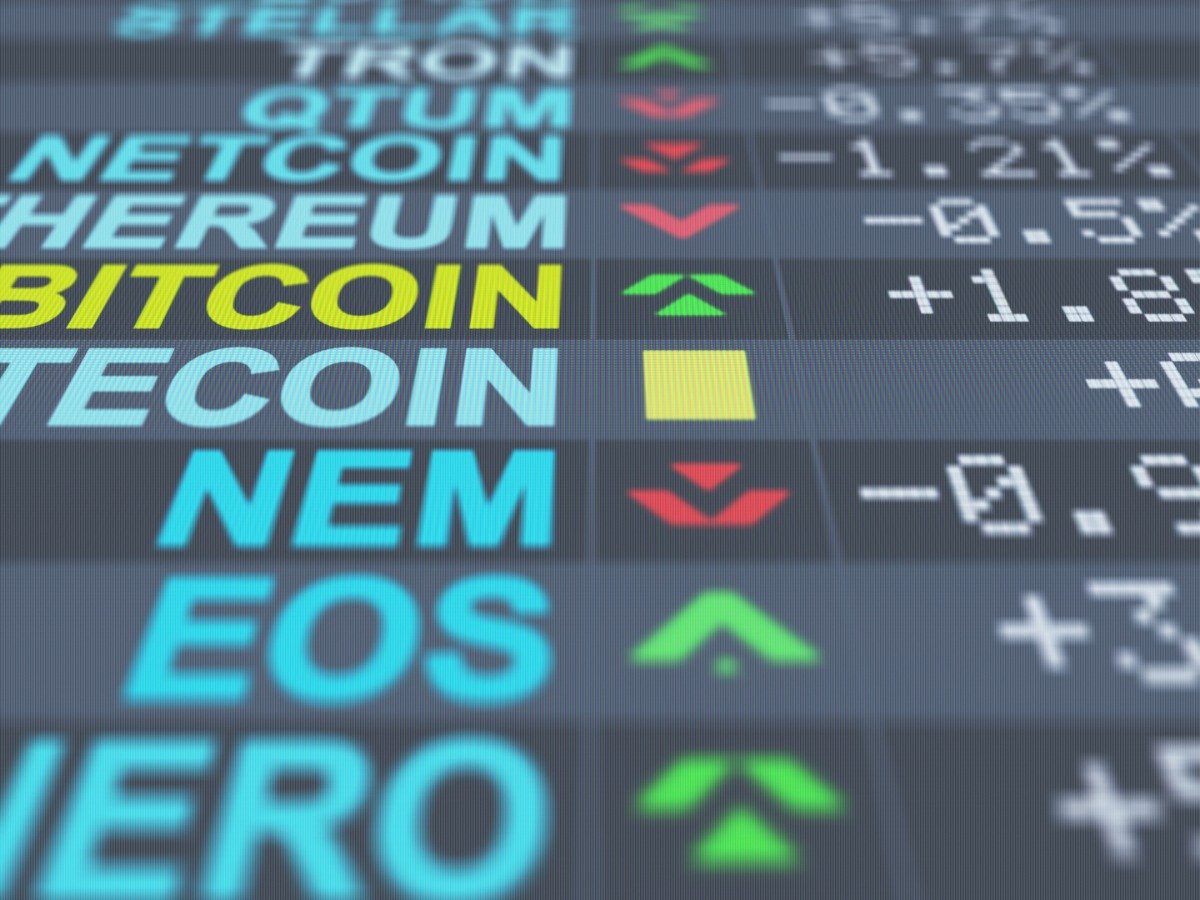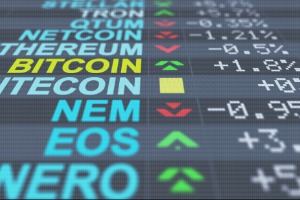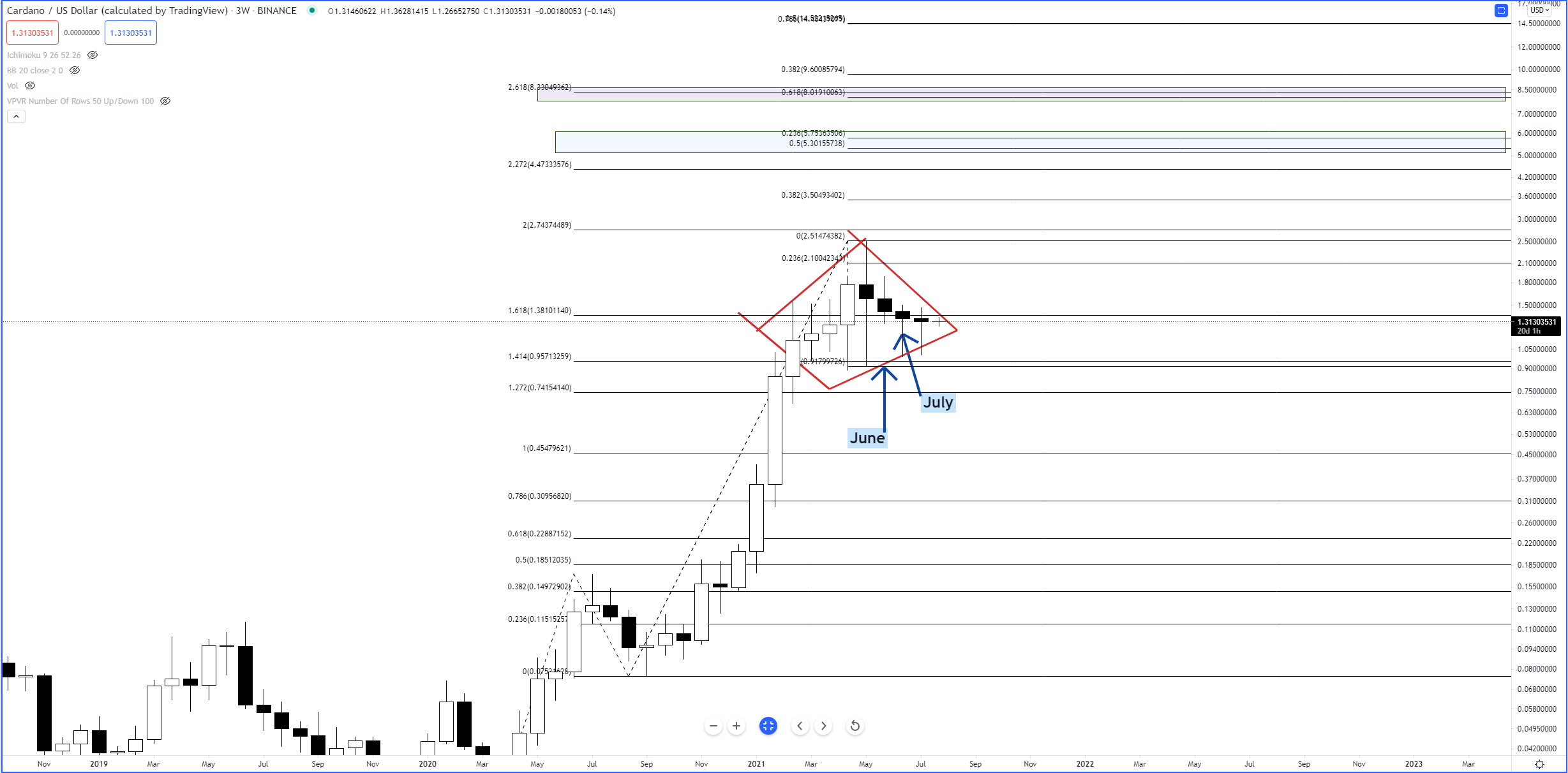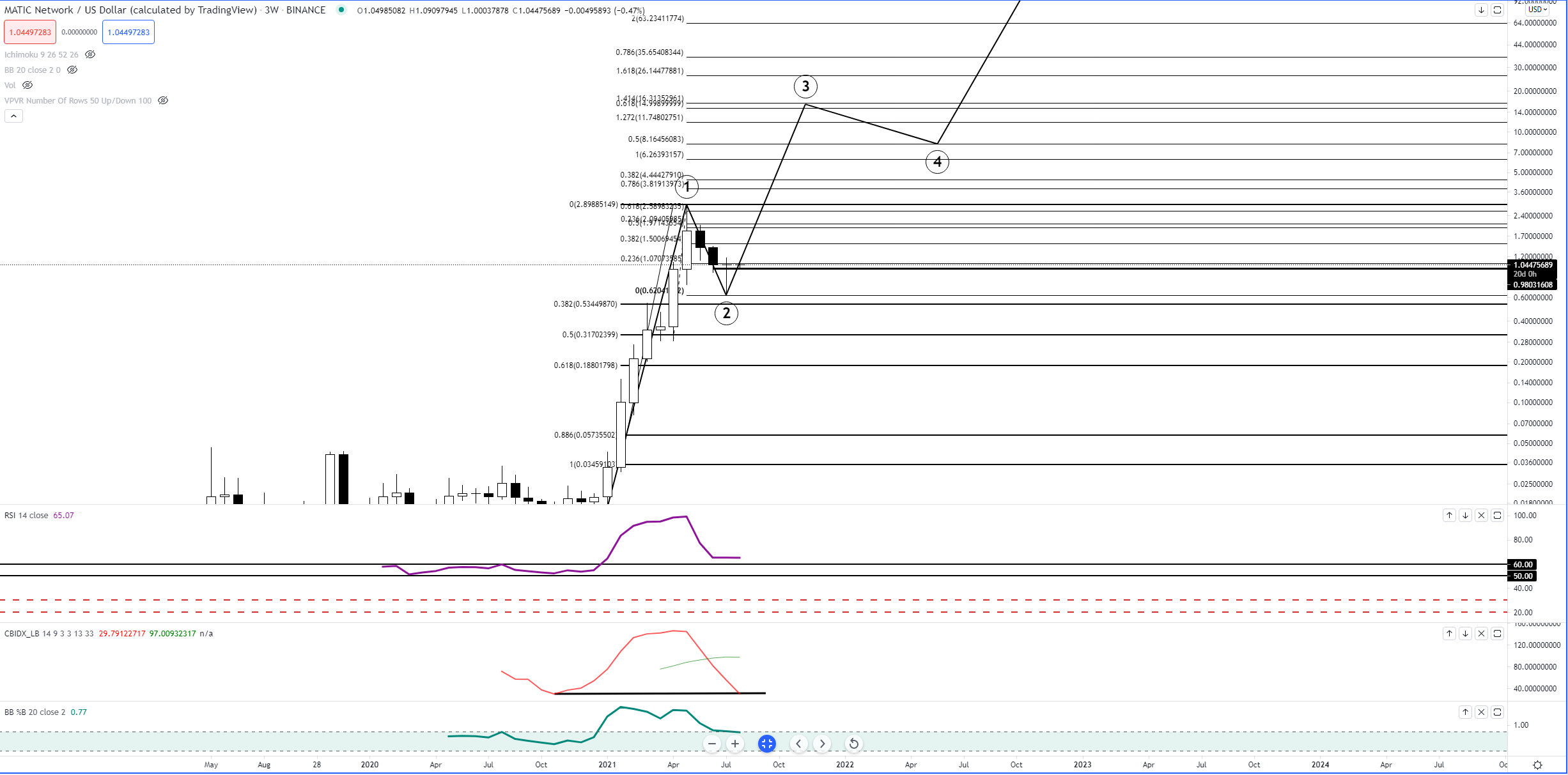
Cardano (ADA)
Above: Cardano (ADAUSD)
On Friday’s (July 30th, 2021) analysis, I focused on Cardano and some of the bearish patterns and setups ahead. As the market transitioned into Monday and a new month, I noticed little kind of blip on Cardano’s monthly chart. There is a red horiztonal ray on the Composite Index – observe where it ends (to the left) and then look at the candlestick for that period. The monthly candlestick for that period is December 2020. Now look to where the Composite Index is currently trading and relate that to the current price level. Notice anything? Prices have moved higher and closed higher between December 2020 and July 2020 but in the Composite Index July 2020 is lower than December 2020. This is a condition known as hidden bullish divergence. I’ve been preaching and writing ad nauseum about the hidden bearish divergence that exists on the daily charts – but Cardano has failed to respond to that. This hidden bullish divergence is a huge huge deal for the bulls because hidden bullish divergence is a warning that the present downside move is likely to terminate, and the broader bullish move will very soon resume. Where would it go? Conservatively, the next zone (light blue shaded area) would be the confluence of two Fibonacci Extensions between $5.30 (50% Fibonacci Extension) and $5.75 (23.6% Fibonacci Extension). The non-conservative kind-of-insane-but-still-realistic-level (light purple/lavender shaded area) would be the confluence of the 261.8% Fibonacci Extension at $8.33 and the 61.8% Fibonacci Extension at $8.02.
Polygon (MATIC)
Above: Polygon (MATICUSD)
Quick note: Polygon is still so new there is not enough data to use the monthly chart for this analysis, instead, I am using the 3-week chart.
Before we get into the likely bullish return of Polygon (MATIC), can we just point out what kind of candlestick printed on the 3-week chart? That candlestick, my friends, is a rare one and that it showed up on the 3-week chart is very telling. That candlestick is known as a dragonfly doji (I think I incorrectly referenced it as a gravestone doji in todays video). The dragonfly doji candlestick is rare by its very nature because it requires the open and close to be nearly identical – it’s exceptionally rare to see one on a long time frame like the 3-week chart. The way that we interpret a dragonfly doji depends on how the market was trading prior to its appearance. If a dragonfly doji appears after a downside move, it’s interpreted as bullish and could be a precursor to upwards movement. If you look at the flat black trendline on the Composite Index, and compare those troughs against their corresponding candlesticks, you’ll notice the same condition is present on Polygon’s 3-week chart that is present on Cardano’s monthly chart: hidden bullish divergence. Assuming that we could begin either the 5th or 3rd leg of an Elliot Impulse Wave, a probable level would be between two Fibonacci Extensions – the 50% Fibonacci Extension at $8.16 and the 100% Fibonacci Extension at $6.26.
Advertisement
Save money on your currency transfers with TorFX, voted International Money Transfer Provider of the Year 2016 – 2020. Their goal is to connect clients with ultra competitive exchange rates and a uniquely dedicated service whether they choose to trade online or over the telephone.
Find out more here.









